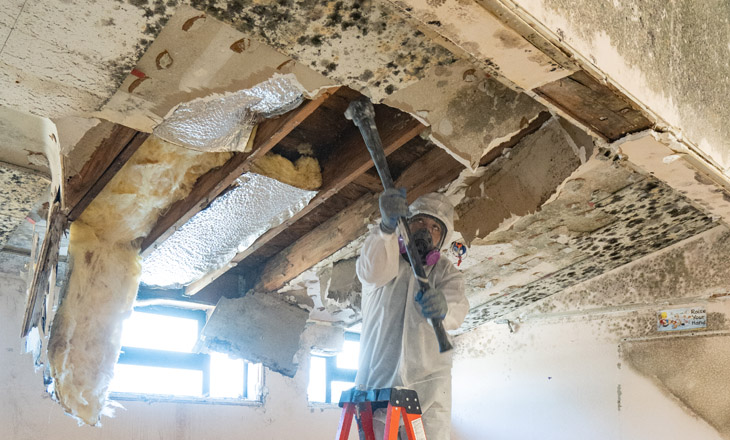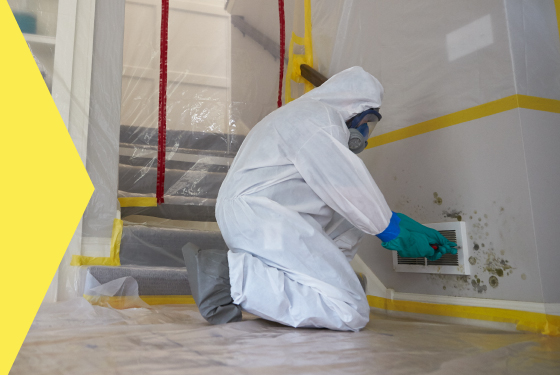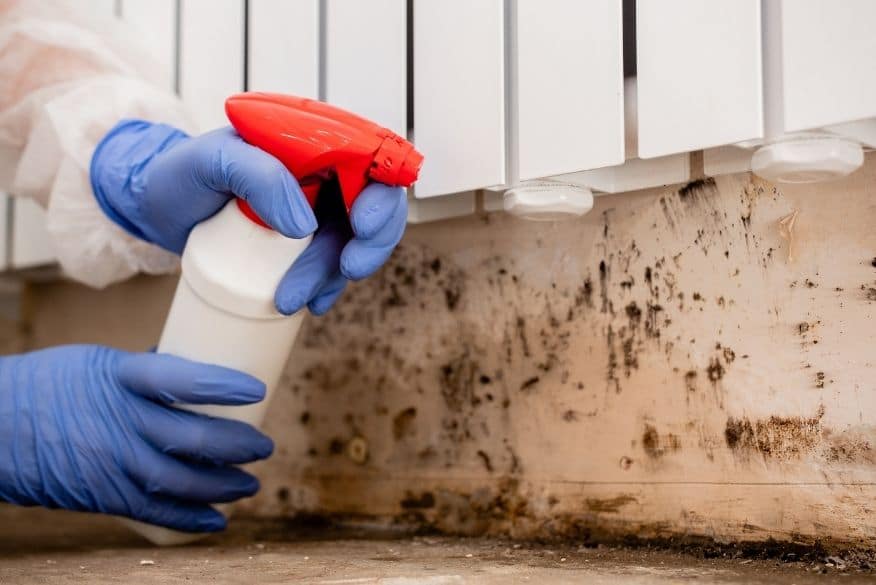Comprehensive Flood Damage Cleanup Rutland VT: Recover with Confidence!
Comprehensive Flood Damage Cleanup Rutland VT: Recover with Confidence!
Blog Article
The Ultimate Guide to Build Removal and Remediation Techniques
The insidious nature of mold growth calls for a systematic technique that encompasses recognition, risk analysis, prevention, removal, and removal. By understanding the different types of mold, the health threats they may provide, and the most reliable methods for elimination, one can ensure a risk-free and healthy environment for occupants.
Recognizing Mold Types

In Addition, Penicillium is recognizable by its blue or green unclear texture and is frequently discovered on water-damaged materials, possibly causing sinus infections and allergies. Alternaria is a sort of mold and mildew that is often black or dark eco-friendly and can cause bronchial asthma signs and symptoms. By having the ability to identify between these different mold and mildew kinds based upon their appearance and linked health risks, individuals can better attend to mold and mildew problems and execute suitable elimination techniques to make certain a risk-free and healthy and balanced environment.
Understanding Mold Wellness Dangers
Having established the distinct attributes of various mold kinds and their associated health dangers, it is necessary to explore the specific wellness ramifications postured by exposure to mold and mildew. Mold exposure can cause a range of health issues, varying from mild irritations to severe allergies and breathing issues. Individuals with allergic reactions or bronchial asthma are specifically at risk to the damaging impacts of mold and mildew exposure. Signs and symptoms of mold-related wellness issues might consist of nasal congestion, coughing, throat irritability, skin rashes, and eye inflammation. Prolonged exposure to mold and mildew spores can worsen these signs and cause much more significant problems in some cases. In addition, specific kinds of mold and mildew, such as black mold and mildew (Stachybotrys chartarum), generate mycotoxins that can cause a lot more extreme illness. These toxic substances can impact the respiratory system, nerves, and total health of individuals. It is essential to deal with mold and mildew concerns immediately and efficiently to reduce the health and wellness risks connected with mold direct exposure.
Avoiding Mold Growth
To effectively prevent mold and mildew development next in indoor environments, executing positive measures is essential. The key to stop mold and mildew is dampness control. Guarantee that any leaks in pipes, roofings, or home windows are without delay fixed to stop water from permeating into walls, ceilings, or floors. Correct air flow is also vital in decreasing moisture degrees, especially in locations vulnerable to dampness like bathrooms, cooking areas, and cellars. Use exhaust fans, dehumidifiers, and air conditioners to control interior humidity levels listed below 60%. Regularly inspect and keep HVAC systems to stop condensation build-up, which can produce a suitable environment for mold growth. Furthermore, correct insulation can help prevent moisture condensation on cold surface areas. Maintain interior areas clean and clutter-free as mold prospers in dusty and raw material. Take into consideration utilizing mold-resistant products for building and construction and improvement tasks. By carefully following these preventive steps, you can develop an unwelcoming setting for mold growth and guard your interior areas from possible mold and mildew infestations.
Effective Mold Elimination Approaches
Mold and mildew removal approaches vary depending upon the extent of the infestation and the kind of mold and mildew present. For tiny, separated locations, rubbing with detergent and water, adhered to by comprehensive drying out, can commonly be adequate. For larger invasions or even more dangerous molds like black mold, expert remediation may be essential.
One reliable approach is HEPA (High-Efficiency Particulate Air) vacuuming, which can help eliminate mold and mildew spores from surface areas and the air. Encapsulation is an additional strategy where an unique sealant is related to surfaces after mold and mildew elimination to stop regrowth.
In situations where permeable products are impacted, such as drywall or insulation, removal and replacement may official source be the most effective strategy. This assists ensure that all mold and mildew is eliminated, like it as it can pass through deep into porous surfaces.
It's vital to resolve the underlying cause of mold growth, such as dealing with leaks or improving ventilation, to stop future infestations (mold remediation rutland vt). Routine examinations and punctual remediation are key to keeping a healthy and balanced indoor setting

Making Sure Appropriate Removal
For optimal end results in mold remediation, careful focus to information and adherence to sector requirements are necessary. Proper removal begins with a thorough inspection to recognize the degree of mold and mildew development, wetness sources, and affected locations. Making use of ideal personal protective tools (PPE) and containment actions is important to avoid cross-contamination and make certain the safety of both residents and removal employees. Removal strategies should be tailored to the certain kind of mold existing and the surface areas impacted. Thorough cleaning and elimination of mold-infested materials, such as drywall or insulation, may be required to eliminate the resource of contamination totally. Adhering to elimination, cleansing, and disinfection of staying surface areas with authorized fungicides assists avoid mold regrowth. It is crucial to address any type of underlying wetness concerns to avoid future mold troubles. Confirmation of effective removal through post-remediation evaluation and testing is important to verify that mold and mildew degrees have returned to regular problems. By following these actions thoroughly, one can efficiently make certain correct mold removal and produce a much healthier interior environment.
Final Thought

Report this page